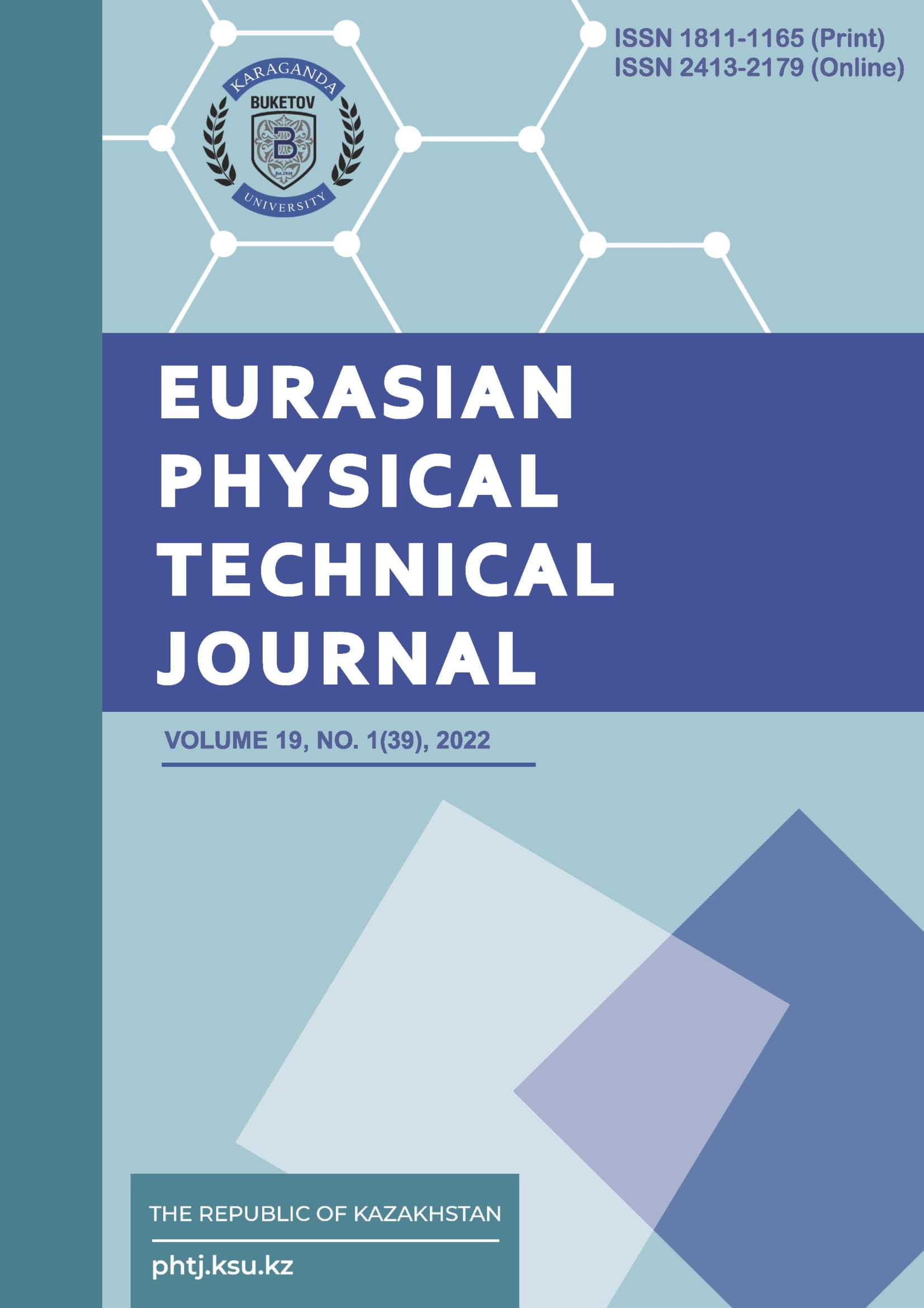"STUDY OF THE WEAR RESISTANCE DEGRADATION KINETICS OF ALN CERAMIC UNDER HEAVY ION IRRADIATION"
DOI:
https://doi.org/10.31489/2022No1/10-14Keywords:
radiation defects, nitride ceramics, wear resistance, dry friction coefficient, heavy ions.Abstract
This work is devoted to the study of changes in the strength properties of AlN ceramics, in particular, the dry friction coefficient and parameters of wear resistance and surface defectiveness, depending on the dose of irradiation with heavy Xe22+ ions with an energy of 200 MeV. Interest in these ceramics is due to their high thermal conductivity, hardness and wear resistance, as well as excellent insulating properties, which makes them promising candidate materials in nuclear power, rocket engineering and microelectronics. At the same time, the operation of these ceramics under conditions of external influences, such as mechanical friction, pressure on the surface, as well as the effect of ionizing radiation, requires additional research and obtaining new data on the stability and retention of properties during the entire service life. During the studies carried out, it was found that at low irradiation doses of 1010-1011 ions/cm2, which are characterized by the formation of single point defects and a low probability of surface degradation as a result of the initialization of gas swelling processes, the dry friction coefficient practically does not change, which indicates ceramics high mechanical friction resistance. However, an increase in the irradiation fluence up to 1012 ion/cm2, which is characterized by the processes of overlapping radiation-induced damaged areas, a deterioration in the dry friction coefficient is observed after 15000 test cycles, which indicates fatigue wear of the ceramic surface and degradation as a result of external influences.
References
"1 Grigoriev S., et al. Wire electrical discharge machining, mechanical and tribological performance of TiN reinforced multiscale SiAlON ceramic composites fabricated by spark plasma sintering. Applied Sciences. 2020, Vol. 11.2, pp. 657-665.
Chen Juanjuan, et al. Mechanical and tribological properties of h-BN/ZrO2/SiC solid-lubricating ceramic composites. Tribology International, 2021, Vol.160, pp. 107061-107080.
Li Yongxia, et al. Effect of Mo particle size on microstructure and mechanical properties of spark plasma sintered silicon nitride. Materials Science and Engineering: A, 2021, Vol. 814, pp. 141155.
Karipbayev, Zh, et al. Time-resolved luminescence excited with N2 laser of YAG: Ce Ceramics formed by electron beam assisted synthesis. Eurasian Physical Technical Journal, 2021, Vol. 17.1 (33), pp. 73-76.
Tang Peng, et al. Influence of grain orientation on hardness anisotropy and dislocation behavior of AlN ceramic in nanoindentation. Ceramics International, 2021, Vol. 47.14, pp. 20298-20309.
Dehghani Hadi, et al. The effect of AlN-Y2O3 compound on properties of pressure less sintered SiC ceramics-A review. International Journal of Refractory Metals and Hard Materials, 2021, Vol.95, pp. 105420.
Wei Zhilei, et al. Preparation of unidirectional porous AlN ceramics via the combination of freeze casting and combustion synthesis. Journal of Materials Science & Technology, 2022, Vol.100, pp. 161-168.
Kadyrzhanov, K. K., Tinishbaeva K., Uglov V.V. Investigation of the effect of exposure to heavy Xe22+ ions on the mechanical properties of carbide ceramics. Eurasian Physical Technical Journal, 2021, Vol. 17 (33), pp. 46-53.
Eremin, E. N., Yurov V. M., Guchenko S.A. Wear resistance and tribological properties of high entropy coatings CrNiTiZrCu. Eurasian Physical Technical Journal, 2021, Vol. 17 (33), pp.13-18.
Zinkle S.J., Skuratov V.A., Hoelzer D.T. On the conflicting roles of ionizing radiation in ceramics. Nuclear Instruments and Methods in Physics Research section B: Beam Interactions with Materials and Atoms, 2002, Vol.191.1-4, pp. 758-766.
Yano T., et al. Neutron irradiation damage in aluminum oxide and nitride ceramics up to a fluence of 4.2× 1026n/m2. Journal of nuclear materials, 2000, Vol.283, pp. 947-951.
Yano T., et al. Neutron irradiation effects on isotope tailored aluminum nitride ceramics by a fast reactor up to 2× l026 n/m2. Journal of Nuclear Materials, 2004, Vol. 329, pp. 1471-1475.
Dukenbayev K., et al. The investigation of various type irradiation effects on aluminum nitride ceramic. Journal of Materials Science: Materials in Electronics, 2019, Vol. 30.9, pp. 8777-8787.
Kucheyev S.O., et al. Ion-beam-produced damage and its stability in AlN films. Journal of applied physics, 2002, Vol. 92.7, pp. 3554-3558.
Trinkler Laima, Baiba Berzina. Recombination luminescence in aluminum nitride ceramics. Physica status solidi (b), 2014, Vol. 251.3, 542-548.
Zinkle S.J., Skuratov V.A., Hoelzer D.T. On the conflicting roles of ionizing radiation in ceramics. Nuclear Instruments and Methods in Physics Research section B: Beam Interactions with Materials and Atoms, 2002, Vol. 191.1-4, pp. 758-766.
Hu Quanli, et al. Study of radiation defects for AlN ceramics under O+ irradiation. Nuclear Instruments and Methods in Physics Research Section B: Beam Interactions with Materials and Atoms, 2000, Vol. 166, pp. 70-74.
Zinkle S. J., Kinoshita C. Defect production in ceramics. Journal of Nuclear Materials, 1997, Vol.251, pp. 200-217.
Kozlovskiy A., et al. Dynamics of changes in structural properties of AlN ceramics after Xe+ 22 ion irradiation. Vacuum, 2018, Vol. 155, pp. 412-422.
Kozlovskiy A. Influence of irradiation temperature on properties change of AlN ceramics. Vacuum, 2018, Vol. 158, pp. 93-100."













